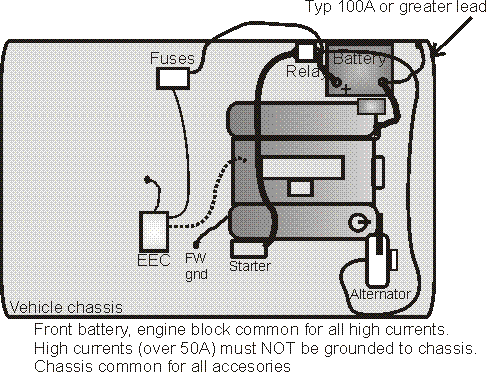jack action
Science Advisor
- 3,519
- 9,809
In the second image, you can see that the negative pole of the battery is connected to the engine block (or the green cable in the third image; which is also connected to the body). That would be the cable labeled "TO GROUND" for the stalled vehicle battery in the first image.
So the whole car (frame, body and engine) is just an extension of the negative pole of the battery.



So the whole car (frame, body and engine) is just an extension of the negative pole of the battery.

